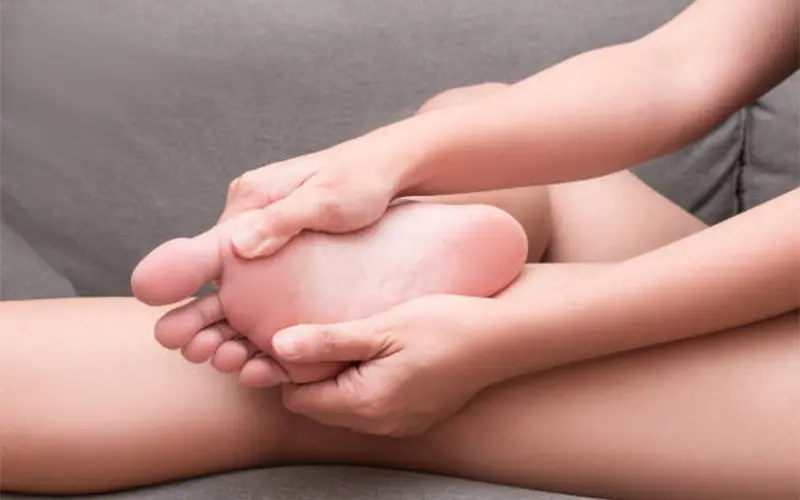Sesamoiditis

Acting as a pulley for tendons, the sesamoids help the big toe move and provide leverage when the big toe pushes off during walking and running. The sesamoids also serve as a weight-bearing surface for the long bone connected to the big toe. A sesamoid injury occurs when a bone becomes embedded in a tendon in the bottom of the foot. In a normal foot, the sesamoids are two pea-shaped bones located in the ball of the foot beneath the big toe joint.
Sesamoid injuries can involve the bones, tendons and/or surrounding tissue in the joint.
Types of sesamoid injuries:
- Turf Toe: When the tissue surrounding the big toe is extended beyond its normal range. Turf Toe may cause immediate, sharp pain and swelling, and could result in injury to soft tissue attached to the sesamoid or a fracture of the sesamoid.
- Fractures:
- Acute Fracture: Usually caused by trauma. Caused by excessive force being striking the bone. Acute Fractures produce immediate pain and swelling to the sesamoid site but do not usually affect the entire big toe joint.
- Chronic Fracture: More of a stress type fracture commonly caused by overuse and/or repetitive movement.
- Sesamoiditis: An injury involving chronic inflammation of the sesamoid bones and tendons involved with those bones, most often caused by overuse. Sesamoiditis is accompanied with a dull pain, often ongoing, beneath the big toe joint. Foot pain comes and goes, usually occurring with certain shoes or certain activities.
What causes sesamoid injuries?
- Activities requiring pressure on the ball of the foot running, basketball, football, golf, tennis and ballet are common examples
- High arches and individuals who often wear high heeled shoes
When to see a podiatrist about sesamoid injuries:
- If your pain is primarily under the big toe on the ball of the foot with sesamoiditis, foot pain may develop gradually. With fractures, pain is immediate.
- If you have difficulty accompanied by foot pain when bending and straightening the big toe.
Pain treatment options for sesamoid injuries:
Treatments vary and after a proper evaluation, your Podiatrist will recommend the best course of treatment for your injury.
Non-surgical treatment options include:
- Sesamoiditis:
- Soft-soled, low-heeled shoes
- Foot cushioning pads
- Taping or bracing the foot
- Steroid injection therapy
- Sesamoid Fractures:
- Stiff soled shoes
- Short leg fracture brace
- Taping
- J-shaped sesamoid pad (also known as dancer’s pads)
- Custom orthotic devices
Surgical Treatment Options
Although surgery is rarely needed for sesamoid issues, if more conservative treatments fail, a surgical procedure may be the best option.

Contact one of our Upperline Health clinics to get your Sesamoiditis treatment started.
Treatments offered may vary by clinic.
